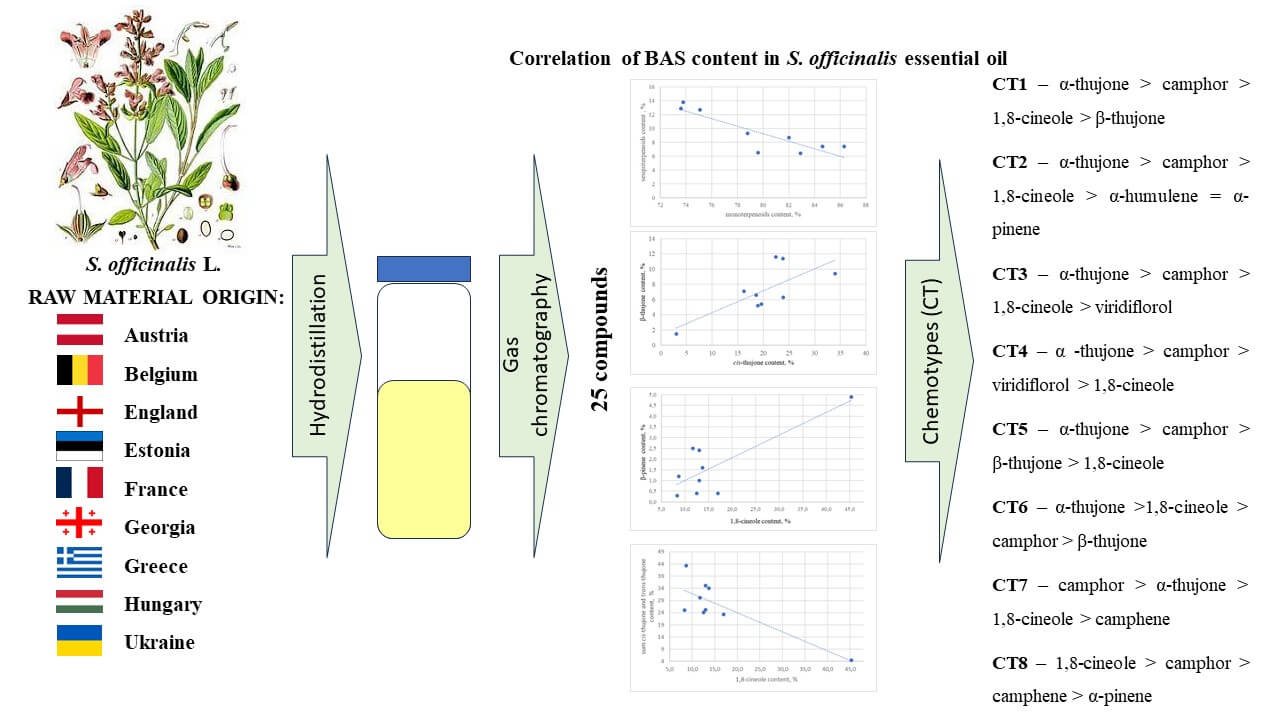 Open Access
Open Access
ARTICLE
Variation in the Composition of the Essential Oil of Commercial Salvia officinalis L. Leaves Samples from Different Countries
1 Institute of Pharmacy, Faculty of Medicine, University of Tartu, Tartu, 50411, Estonia
2 Institute of Chemistry, Tallinn University of Technology, Tallinn, 12618, Estonia
3 The Department of Pharmaceutical Management, Drug Technology and Pharmacognosy, Ivano-Frankivsk National Medical University, Ivano-Frankivsk, 76018, Ukraine
4 The Department of Pharmacognosy, National University of Pharmacy, Kharkiv, 61002, Ukraine
5 The Department of Clinical Laboratory Diagnostics, Kharkiv National Medical University, Kharkiv, 61022, Ukraine
* Corresponding Authors: Ain Raal. Email: ; Oleh Koshovyi. Email:
Phyton-International Journal of Experimental Botany 2024, 93(8), 2051-2062. https://doi.org/10.32604/phyton.2024.052790
Received 15 April 2024; Accepted 19 July 2024; Issue published 30 August 2024
Abstract
Salvia officinalis L. (Lamiaceae) leaves and its essential oil is used for mouth and throat disorders, skin disorders, minor wounds, and gastrointestinal disorders, and is widely used worldwide. The research aimed to conduct a comparative study of the composition of S. officinalis essential oils from commercial samples, and their main chemotypes. The volatile constituents from S. officinalis leaves were investigated using gas chromatography (GC). The commercial samples of sage leaves were obtained from retail pharmacies in nine mainly European countries. The yield of essential oil in S. officinalis commercial leaves was between 10.0 and 24.8 mL/kg. The principal components (>5%) among the main identified 25 compounds were 1,8-cineole (8.3%–45.3%), α-thujone (3.0%–34.0%), сamphor (11.3%–29.3%), β-thujone (1.5%–12.9%), viridiflorol (1.1%–10.4%), camphene (2.6%–7.1%), and α-pinene (1.3%–5.8%). In seven (Estonia, England, France, Hungary, Belgium, Ukraine, Georgia) samples α-thujone dominated. Four samples (Estonia, Georgia, England, Hungary) belong to the most common chemotype α-thujone > camphor > 1,8-cineole. Eight chemotypes of S. officinalis essential oils have been found. Toxic thujones are widespread compounds among them.Graphic Abstract

Keywords
Cite This Article
 Copyright © 2024 The Author(s). Published by Tech Science Press.
Copyright © 2024 The Author(s). Published by Tech Science Press.This work is licensed under a Creative Commons Attribution 4.0 International License , which permits unrestricted use, distribution, and reproduction in any medium, provided the original work is properly cited.


 Submit a Paper
Submit a Paper Propose a Special lssue
Propose a Special lssue View Full Text
View Full Text Download PDF
Download PDF Downloads
Downloads
 Citation Tools
Citation Tools